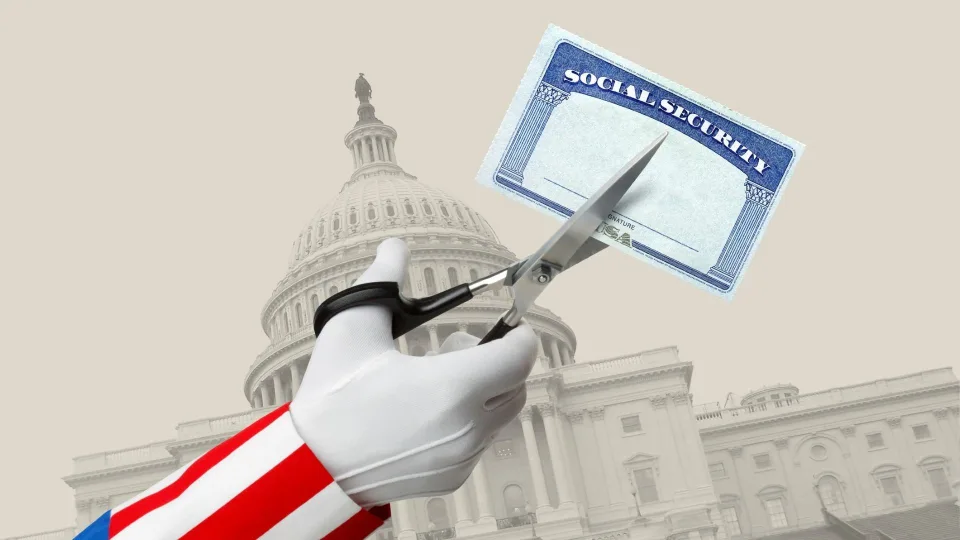
As baby boomers age into retirement, many find their financial outlook a little more uncertain than they had hoped. For several years, Congress has debated cuts to Social Security programs that could reduce or close certain services and benefits many boomers rely on.
In this article, we’ll discuss potential cuts to Social Security and look at some programs and services that can provide much-needed assistance. With so much uncertainty about Social Security’s future, now is arguably an even more critical time than ever to become familiar with these proposed changes — and plan accordingly.
Cuts to Social Security
It’s no secret that Social Security is running low on money. If nothing changes, the trust funds that Social Security has been withdrawing from will be depleted within the next decade. That means Social Security won’t have enough money to pay retirees their full benefits.
“The most recent Social Security Trustees report explains that the OASI and HI asset reserve funds are on track to be depleted in 2033,” said Joe Allaria, partner at CarsonAllaria Wealth Management and host of “The Retirement Power Hour.” “At that time, there would only be enough revenue from Social Security to cover 77% of scheduled benefits until 2097.”
“Given the magnitude of Social Security’s impact on so many Americans,” Allaria added, “the odds of benefits taking a 23% cut across the board are very low. However, the longer we wait to address this obvious issue, the more difficult it will be to fill the necessary gap.”
To address the problem, a few proposed solutions are being discussed. This includes reducing Social Security benefits or raising the full retirement age. While increasing the full retirement age won’t affect most boomers, reduced benefits could impact them because they are already at or near retirement.
Nothing has been decided yet, so any cuts or adjustments to Social Security are still just proposed at this point.
Cost of Living Adjustment
Although it’s not a cut, the Cost of Living Adjustment (COLA) impacts the amount of money Social Security recipients receive. Each year, Social Security increases its benefits according to the COLA, which is based on increased cost of living as measured by the Consumer Price Index. The COLA for 2024 will be 3.2%. The COLA for 2022 was 8.7%, the most significant increase since 1981.
The COLA is based on inflation in the third quarter of the prior year (July, August and September). In this year’s calculations, inflation was high during the first two quarters and then slowed by the third quarter, thanks to rate adjustments by the Federal Reserve. However, some people may have accrued debt during those months of rapid inflation. A smaller COLA increase could make it harder for retirees to pay down the debt accrued during those times. The increase of 3.2% may not be able to keep pace with today’s inflation or that in the coming quarters.
Programs and Services for Boomers
If you’re struggling with money in retirement, there are a few programs and services you can consider. These programs can help with food, medical bills and employment.
Supplemental Nutrition Assistance Program
The Supplemental Nutrition Assistance Program (SNAP) provides food benefits to low-income Americans to supplement their grocery budget. You have to qualify according to your income and assets. A household with an elderly or disabled person has to meet only the net income limit, which is gross income minus allowable deductions.
The net monthly income limit for SNAP from Oct. 1, 2023, through Sept. 30, 2024, is $1,215 for a household of one or $1,644 for a household of two.
If you’re eligible, you will receive SNAP benefits on an Electronic Benefits Transfer (EBT) card, which works like a debit card. Benefits are automatically loaded into your account each month. You can then use your EBT card to buy groceries at authorized food stores and retailers.
Commodity Supplemental Food Program
The U.S. Department of Agriculture runs the Commodity Supplemental Food Program (CSFP). Certain low-income people over the age of 60 are eligible for a monthly food package containing vegetables, fruits, cheeses, grains, protein, milk and more.
Medicare Savings Programs
Medicare Savings Programs can help pay your Medicare Part A and B premiums, deductibles, coinsurance and copayments to eligible recipients. You apply for Medicare Savings Programs through your state, and your state will determine which program or programs you qualify for.
To qualify, you must have income and resources below a specific limit. There are four Medicare Savings Programs: the Qualified Medicare Beneficiary (QMB) Program, the Specified Low-Income Medicare Beneficiary (SLMB) Program, the Qualifying Individual (QI) Program and the Qualified Disabled and Working Individual (QDWI) Program.
Senior Community Service Employment Program
If you’re struggling with money in retirement and are not disabled, you may be able to work part time. If the cuts have impacted you, part-time work can help supplement your Social Security income. The U.S. Department of Labor runs the Senior Community Service Employment Program. It helps subsidize part-time employment and training in community service positions so older workers can move to unsubsidized, private-sector jobs.
Bottom Line
Retirement should be a relaxing time, but finances can cause stress. If you’re struggling with money, try checking out one of these programs or services. They may be able to help lift some of the financial burden that you are feeling during retirement.
Allaria said the best thing you can do today is plan for the worst-case scenario: a 23% benefit reduction in 2033.





























